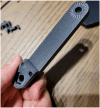Composite Filament Materials for 3D-Printed Drone Parts: Advancements in Mechanical Strength, Weight Optimization and Embedded Electronics
- PMID: 40508463
- PMCID: PMC12155913
- DOI: 10.3390/ma18112465
Composite Filament Materials for 3D-Printed Drone Parts: Advancements in Mechanical Strength, Weight Optimization and Embedded Electronics
Abstract
The rapid advancement of 3D printing technologies has greatly assisted drone manufacturing, particularly through the use of composite filaments. This paper explores the impact of fiber-reinforced materials, such as carbon-fiber-infused PLA, PETG, and nylon, on the mechanical performance, weight optimization, and functionality of unmanned aerial vehicles (UAVs). The study highlights how additive manufacturing enables the fabrication of lightweight yet structurally robust components, enhancing flight endurance, stability, and payload capacity. Key advancements in high-speed fused filament fabrication (FFF) printing, soluble support materials, and embedded electronics integration are examined, demonstrating their role in producing highly functional UAV parts. Furthermore, the challenges associated with material processing, cost, and scalability are discussed, along with solutions such as advanced extruder designs and hybrid manufacturing approaches that combine 3D printing with CNC machining. By utilizing composite filaments and innovative fabrication techniques, 3D printing continues to redefine drone production, enabling rapid prototyping and on-demand customization. The use of carbon-fiber-infused PLA, PETG, and nylon has demonstrated outstanding improvements in strength-to-weight performance, structural durability, and dimensional stability-key factors for enhancing flight endurance, maneuverability, and payload capacity in UAV applications. These composite materials also support the integration of embedded electronics and functional features, reinforcing their suitability for high-performance drone parts. Looking forward, future research should explore the potential of nanocomposite filaments not as a replacement but as a complementary advancement to existing composites. These materials offer opportunities for further enhancing multifunctionality, such as thermal/electrical conductivity and in situ sensing, which could expand UAV capabilities significantly.
Keywords: 3D printing; UAV fabrication; additive manufacturing; carbon-fiber-infused materials; composite filaments; drone optimization; embedded electronics; high-speed FFF; hybrid manufacturing; structural integrity.
Conflict of interest statement
The authors declare no conflicts of interest.
Figures




References
-
- MohamedZain A.O., Chua H., Yap K., Uthayasurian P., Jiehan T. Novel Drone Design Using an Optimization Software with 3D Model, Simulation, and Fabrication in Drone Systems Research. Drones. 2022;6:97. doi: 10.3390/drones6040097. - DOI
-
- Hairi S.M.F.B.S., Saleh S.J.M.B.M., Ariffin A.H., Omar Z.B. Green Hybrid Composites Science and Technology. Springer Nature; Singapore: 2023. A Review on Composite Aerostructure Development for UAV Application; pp. 137–157.
-
- Săftoiu G.-V., Constantin C., Nicoară A.-I., Pelin G., Ficai D., Ficai A. Glass Fibre-Reinforced Composite Materials Used in the Aeronautical Transport Sector: A Critical Circular Economy Point of View. Sustainability. 2024;16:4632. doi: 10.3390/su16114632. - DOI
-
- Zaharia S.-M., Pascariu I.S., Chicos L.-A., Buican G.R., Pop M.A., Lancea C., Stamate V.M. Material Extrusion Additive Manufacturing of the Composite UAV Used for Search-and-Rescue Missions. Drones. 2023;7:602. doi: 10.3390/drones7100602. - DOI
Publication types
LinkOut - more resources
Full Text Sources

